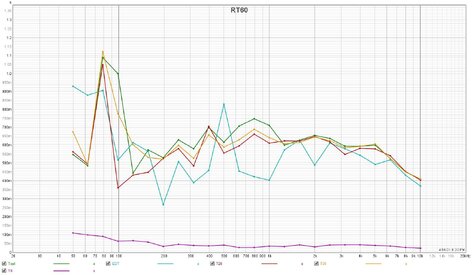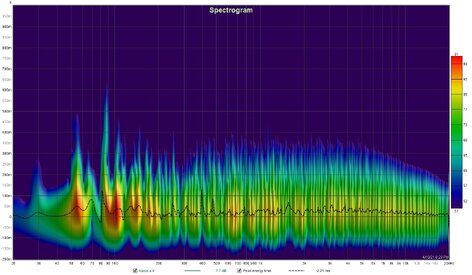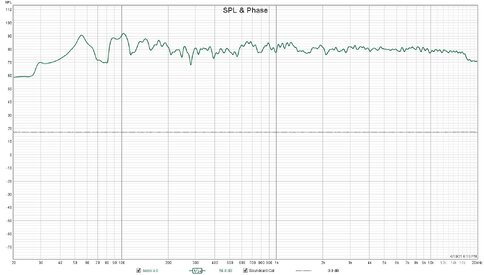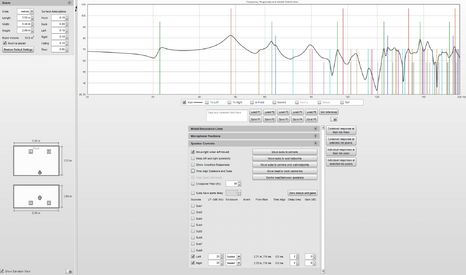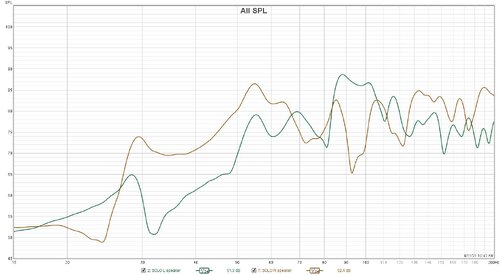aakkaaii
Registered
Thread Starter
- Joined
- Apr 4, 2021
- Posts
- 9
More
- Preamp, Processor or Receiver
- Harman Kardon AVR130
- Main Amp
- Grundig V20
- Additional Amp
- Grundig V35
- DAC
- Beresford Caiman
- Computer Audio
- Focusrite Scarlett mono
- Universal / Blu-ray / CD Player
- Sony UBP-X700
- Streaming Equipment
- Raspberry pi 4
- Front Speakers
- Grundig 850prof
- Center Channel Speaker
- Grundig 1050Aprof
- Subwoofers
- Infinity Horeus
Dear all, these are my first measurements taken today in my music listening room.
I'm fairly surprised how well they (at least) look in terms of flatness of the curve. I thought my starting point was worst than this honestly.
I know that I need to treat in some way, to improve RT60... but need to consider this is not a dedicated room.
Apart from measuring, while listening, I know my room suffers one main defect that gets evident in rock/prog music: when big dist guitars or drums cymbal kicks in, the sound gets really messy and unpleasant.
Can anyone 'see' this awful behavior in my measurements and advice how to try to correct?
In general, how would you approach correcting this room?
many many thanks in advance
Angelo
I'm fairly surprised how well they (at least) look in terms of flatness of the curve. I thought my starting point was worst than this honestly.
I know that I need to treat in some way, to improve RT60... but need to consider this is not a dedicated room.
Apart from measuring, while listening, I know my room suffers one main defect that gets evident in rock/prog music: when big dist guitars or drums cymbal kicks in, the sound gets really messy and unpleasant.
Can anyone 'see' this awful behavior in my measurements and advice how to try to correct?
In general, how would you approach correcting this room?
many many thanks in advance
Angelo
Attachments
Last edited:







